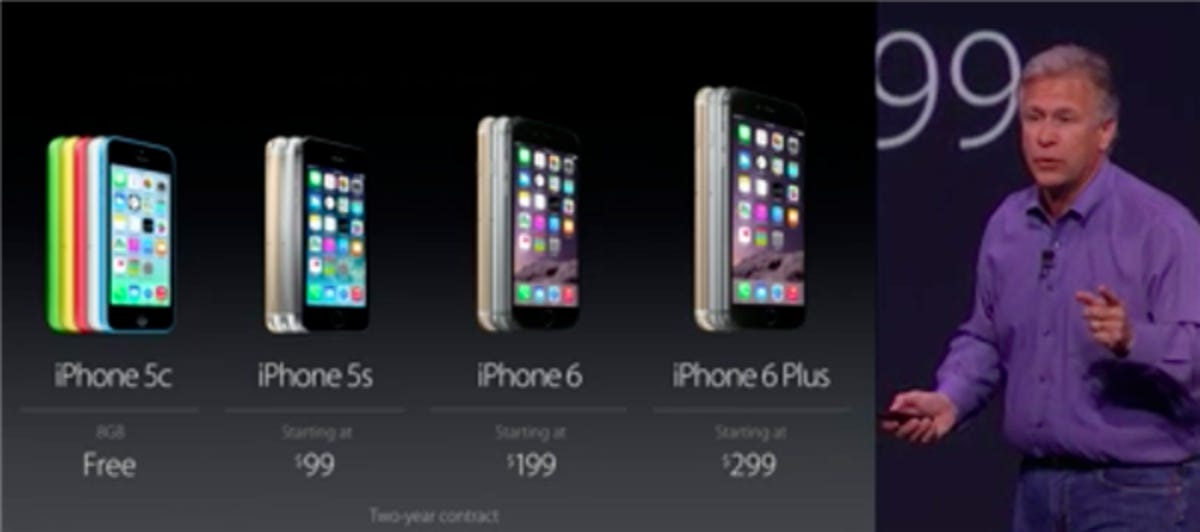
Lynn La/CNET
Apple has slashed prices on its older iPhones to make way for the newly announced iPhone 6 and iPhone 6 Plus.
The company announced on Tuesday that the iPhone 5S and iPhone 5C will live on for customers who don’t want to get their hands on the new iPhone 6 and iPhone 6 Plus. The iPhone 5S will start at $99 with a two-year agreement. An 8GB version of the iPhone 5C will now be available for free with a two-year agreement. Prices and availability in the UK and Australia are yet to be announced, but we’ll update this story as soon as we have them.
Apple has made the same move in years past. Whenever the company unveils a new flagship handset, it cuts the price on its older models. The idea for Apple is to maximize the number of customers it can target at different price points and more effectively compete against the massive number of Android devices on store shelves.
Tuesday’s event, taking place at the Flint Performing Arts Center in Apple’s hometown of Cupertino, Calif., is one of the most anticipated product launches of the year. Consumers, analysts, and investors have been waiting for Apple to introduce the “amazing” new products that CEO Tim Cook has promised for more than a year. Cook, who took over as CEO from Steve Jobs three years ago, hasn’t yet taken the company into new markets beyond those established by his former boss. But he’s now expected to do just that with wearables, mobile payments, and other possible arenas.
It’s vital for Apple to expand beyond its current product offerings. The company hasn’t entered a new category since Jobs unveiled the “magical” iPad tablet in 2010, and every new version of the iPhone, iPad, and Macintosh computer since then has been deemed “evolutionary” rather than “revolutionary” by reviewers and customers, leading to slowing profit and revenue growth. Apple generates about two-thirds of its sales from the iPhone and iPad, but the markets for those gadgets are becoming saturated, with rivals from Amazon to Google to Microsoft to Samsung battling for customers and the billions they spend on mobile devices.
Apple CEO Tim Cook has promised for over a year that Apple in 2014 would introduce
and enter
beyond its wildly successful smartphones, tablets, and computers. And in late May, Eddy Cue, head of iTunes and the man behind Apple’s $3 billion acquisition of headphone and streaming music service provider Beats, upped the pressure by boasting that the consumer-electronics giant is working on its ” best product pipeline in 25 years.”
Until today, the iPhone 5S started at $199 for 16GB, $299 for 32GB, $399 for 64GB, all with a two-year contract. Off contract, the phone retailed for $649 for 16GB, $749 for 32GB, and $849 for 64GB.
The iPhone 5C cost $99 for 16GB of storage or $199 for 32GB, both with a two-year contract. Off contract, the phone retailed for $549 for 16GB or $649 for 32GB.
Before its launch last year, market watchers expected the 5C to be a low-cost device that would help Apple target emerging markets. But the pricing of the device remained too high for budget-conscious shoppers in places like China and India. Rather than help Apple attract the mainstream or low-end customer, the 5C instead helped it better build its position at the high end. But the 5C didn’t sell well, at least not initially, Cook admitted during Apple’s earnings report in January.
Apple previously offered an 8GB iPhone 4S for free with a two-year contract, or $450 off contract. That device has been discontinued.



